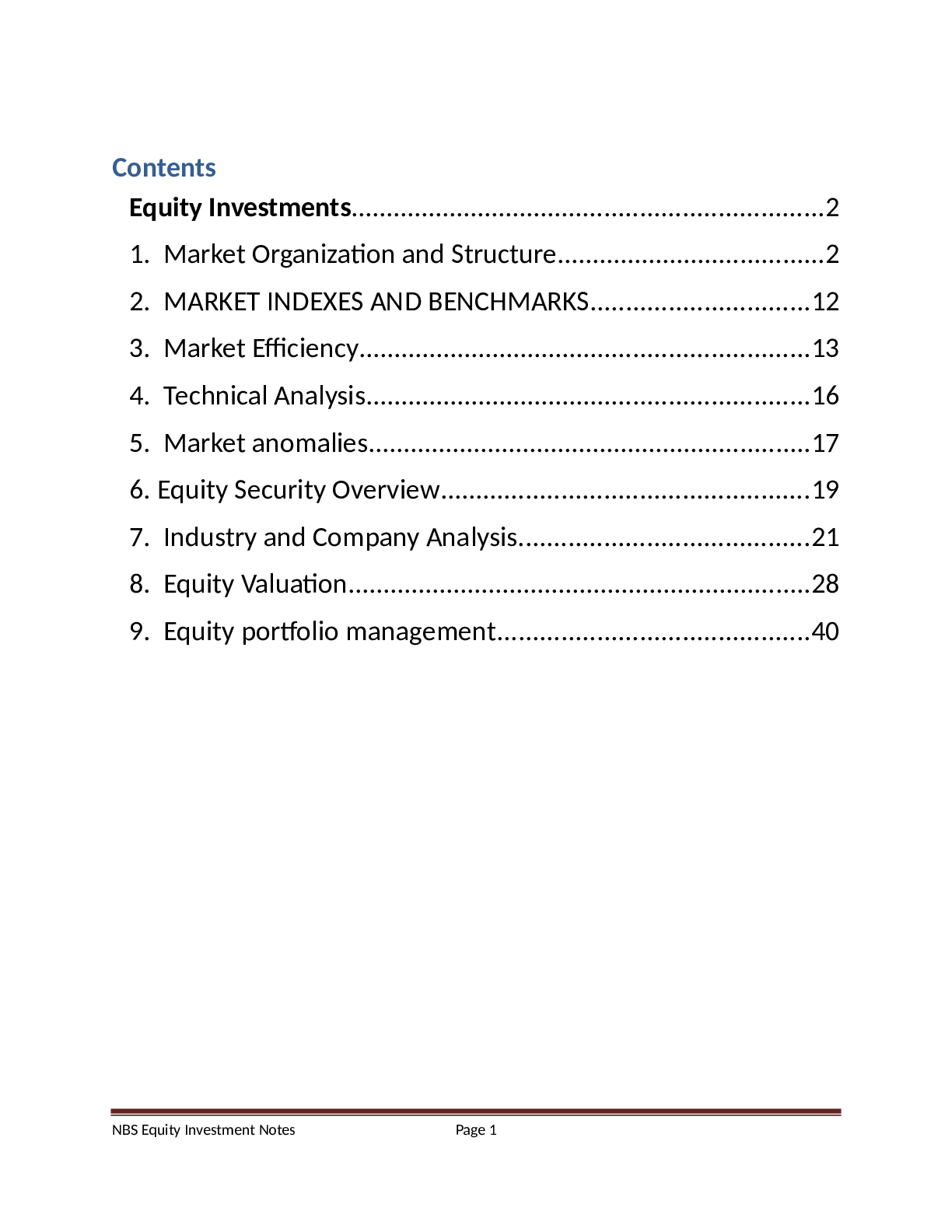Business Analytics > Study Notes > BUSINESS ANALYTICS LATEST UPDATE STUDY NOTES 2021 (All)
BUSINESS ANALYTICS LATEST UPDATE STUDY NOTES 2021
Document Content and Description Below
BUSINESS ANALYTICS LATEST UPDATE STUDY NOTES 2021 t kind of data would we want to collect? 1. What are the expectations? o Data to be Collected: Number of people on the ship vs. how many p... eople go to the entertainment Age Marital status Children/no children How many children o Can be a “check all that apply” when customers sign up for the cruise (casino, pool, movie, concert, etc.) o Maybe the cruise ship can even cut down on the amount of entertainment they offer so they can save money for other options o Look at the hour by hour data to see when people are actually spending time doing ship activities Population vs. Sample Population – Includes all objects of interest in a study – people, households, machines, etc.; Represents all of the data that we might be interested in; all the entities of interest in a study Example: the cruise ship case (above) - If we’re interested in the number of people involved in the entertainment, we would want data from everyone who has ever been on the ship - They collect a “sample” from the population Sample – A subset of the population, usually chosen randomly; Not the whole population - Good analysis = Good data - Data = plural; Datum = singular Data Set Variables vs. Observation Data Set – (Usually) a rectangular array of data, with variables in columns observations in rows, and variable names in the top row; Rows and columns with information Variable (or field or attribute) – Attribute or measurement of members of a population, such as height, gender, or salary; The subjects in the columns of the data set; In columns; Also known as a “field” or an “attribute” Observation (or case or record) – It’s a list of all variable values for a single member of a population; A single response to all of the questions; In rows; Also known as a “case” or a “record” Types of Data Numerical – If you CAN perform meaningful arithmetic on it (add, subtract, multiply, divide) - Ex: How old are you? - Can see the numbers and can compare them Categorical – If you CAN’T perform meaningful arithmetic on it - Ex: Male or Female? - These are categories Two Types of Numerical (expressed as numbers): 1. Discrete – If there are a FINITE number of values 2. Continuous – If there is an INFINITE number of values Two Types of Categorical (expressed as text): 1. Ordinal – If there IS a natural ordering of its possible categories - Ex: Asking someone’s satisfaction of this class between 1 and 5 - It’s not that 4 is two better than 2, it’s just that 4 is a little better than 2 2. Nominal – If there is NO natural ordering of its possible categories; Used to “name” or label a series of values Cross Sectional Data vs. Time Series Data Cross Sectional Data – Data on a cross section of a population at a distinct point in time; What we usually think when we deal with a data set [Show More]
Last updated: 2 years ago
Preview 1 out of 29 pages

Buy this document to get the full access instantly
Instant Download Access after purchase
Buy NowInstant download
We Accept:

Reviews( 0 )
$12.00
Can't find what you want? Try our AI powered Search
Document information
Connected school, study & course
About the document
Uploaded On
Apr 06, 2021
Number of pages
29
Written in
Additional information
This document has been written for:
Uploaded
Apr 06, 2021
Downloads
0
Views
107













